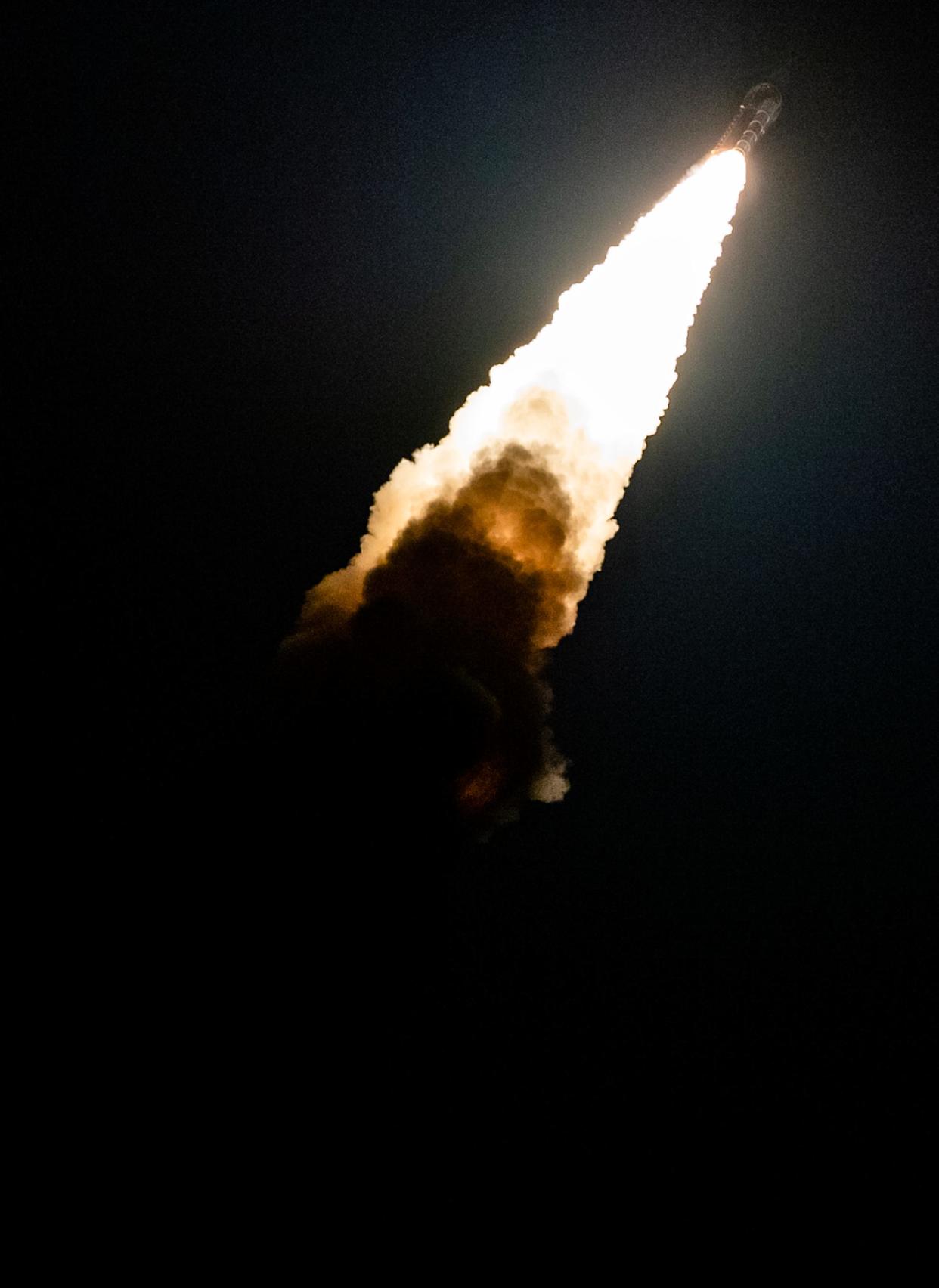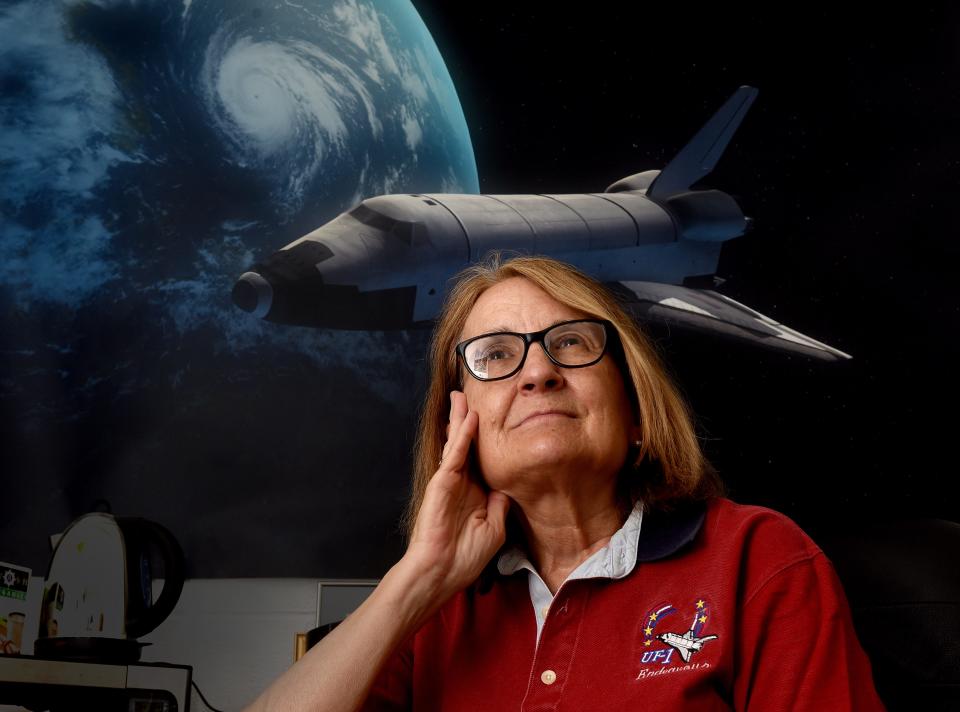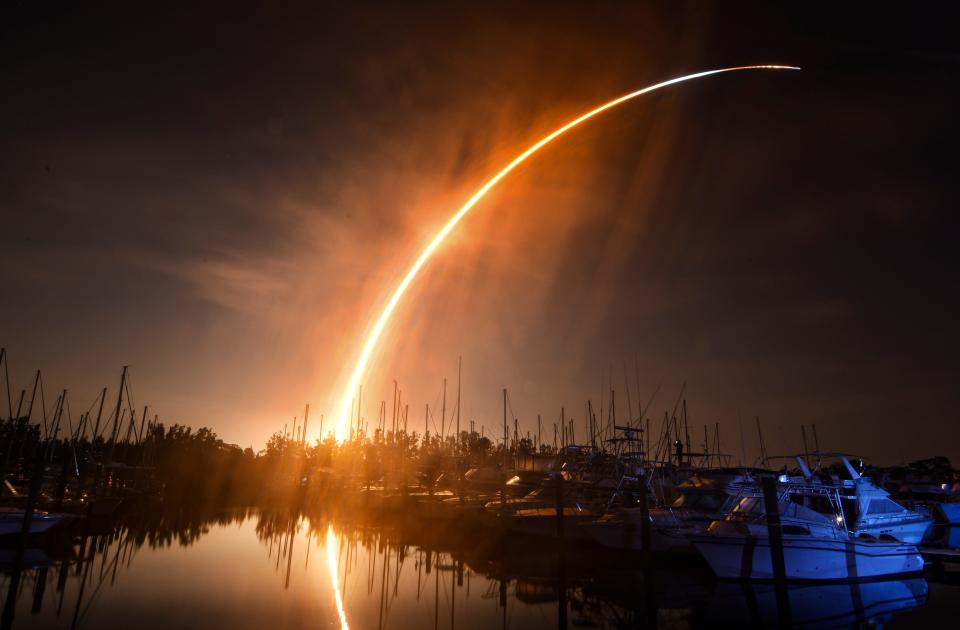With Artemis on its way to the moon, space enthusiasts react to its successful launch

Hank Pernicka, Val Germann and Linda Godwin each stayed up late to watch the 12:47 a.m. Wednesday launch of NASA's Artemis 1 mission live.
There had been a few delays, but the Space Launch System Rocket carrying the Orion crew capsule got off the launch pad and is now on its way to the moon. It's an unmanned mission scheduled to last 25 days.
Pernicka, Curators Distinguished Teaching Professor in aerospace engineering at Missouri University of Science and Technology, said his first reaction upon launch was a relief.
"NASA had a lot riding on this," Pernicka said.
Germann and Godwin also admitted feeling relief about the successful launch.

"I was worried there might be another delay," said Germann, president of Central Missouri Astronomical Association.
The launch was impressive, Pernicka said.
"The live shot, with video from ground level, was very fun to watch," Pernicka said.
Godwin, a former astronaut and retired University of Missouri professor, agreed.
"It's just awesome," she said. "It's pretty exciting."
She, too, said she was glad that an earlier hydrogen leak didn't delay the launch again.
Another positive review of the launch came from Germann.
"It was pretty amazing," Germann said. "It's more powerful than the Saturn V, for those old enough to remember Apollo. This is very reminiscent of 50 years ago. There's a unique tension with every launch and when it works, it's huge."
The SLS is the most powerful rocket in the world, with Orion traveling farther than any spacecraft built for humans; according to NASA, It will travel 280,000 miles from Earth and 40,000 miles beyond the far side of the moon.
Splashdown in the Pacific Ocean is scheduled for Dec. 11.
Orion had undergone a 15-minute engine burn called the translunar injection to break free of Earth's gravity, Pernicka said.
"It's essentially coasting from this point to the moon," he said.
This mission and others provide useful information for his classes, Pernicka said.
"These current events are definitely nice for instructional purposes," he said.
He took five minutes of class time recently for students to watch a live launch of the SpaceX Falcon Heavy rocket.
The Artemis mission is interesting from an engineering and science perspective, he said.

"My core expertise is orbital dynamics," Pernicka said. "It provides for some interesting calculations, particularly when it get backs to Earth and has to be error-free."
It's unlike returning from low-earth orbit, he said.
"Returning from the moon is much more difficult because you're going so much faster," Pernicka said.
The return speed is up to 25,000 miles per hour, according to NASA information. NASA plans to fly a crew around the moon in 2024 and land people on the moon in 2025.
"This is a really critical mission," Godwin said of Artemis 1.
She will pay attention as the mission progresses and look for the photos and video NASA provides at Orion takes a low pass over the moon, she said.
"It's off to a good start," Godwin said.
Germann, who watched the Apollo moon missions with interest, said he's looking forward to return of people to the moon.
"The idea of having a station orbiting the moon so they can stockpile food and supplies and then fly these missions down to the moon and back makes a lot of sense," Germann said of what NASA is calling its Gateway outpost. "Once you get that station up there, you have a lot more flexibility."
It would be natural to one day have an observatory on the dark side of the moon, he said.
"This is very encouraging," Germann said of the launch and mission.
After Orion leaves the moon's orbit on Nov. 28, Laws Observatory at MU is planning a talk before it opens on Nov. 30 and again Dec. 7. The December date is when the moon passes in front of Mars for about an hour, called an occultation.
"We're going to try to stream live from Laws," Germann said, adding that the event also will be visible with the naked eye or binoculars.
"Mars is as close to the Earth as it's going to be in many years" and it will be a full moon, Germann said.
NASA promotes the Artemis missions as the first step for humans traveling to Mars.
Roger McKinney is the Tribune's education reporter. You can reach him at rmckinney@columbiatribune.com or 573-815-1719. He's on Twitter at @rmckinney9.
This article originally appeared on Columbia Daily Tribune: Artemis 1 launch, mission signal at return to the moon for people

